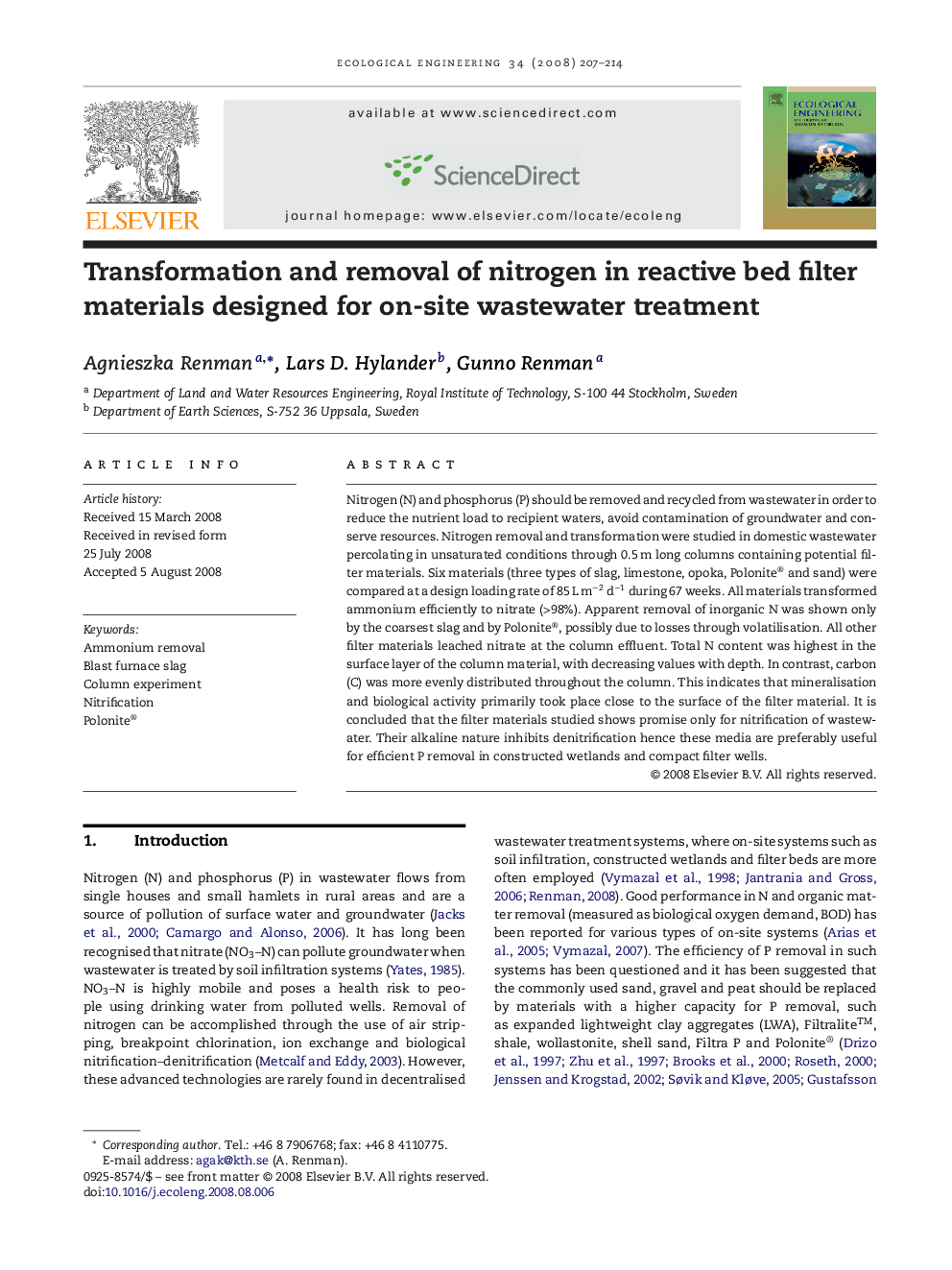| Article ID | Journal | Published Year | Pages | File Type |
|---|---|---|---|---|
| 4390703 | Ecological Engineering | 2008 | 8 Pages |
Nitrogen (N) and phosphorus (P) should be removed and recycled from wastewater in order to reduce the nutrient load to recipient waters, avoid contamination of groundwater and conserve resources. Nitrogen removal and transformation were studied in domestic wastewater percolating in unsaturated conditions through 0.5 m long columns containing potential filter materials. Six materials (three types of slag, limestone, opoka, Polonite® and sand) were compared at a design loading rate of 85 L m−2 d−1 during 67 weeks. All materials transformed ammonium efficiently to nitrate (>98%). Apparent removal of inorganic N was shown only by the coarsest slag and by Polonite®, possibly due to losses through volatilisation. All other filter materials leached nitrate at the column effluent. Total N content was highest in the surface layer of the column material, with decreasing values with depth. In contrast, carbon (C) was more evenly distributed throughout the column. This indicates that mineralisation and biological activity primarily took place close to the surface of the filter material. It is concluded that the filter materials studied shows promise only for nitrification of wastewater. Their alkaline nature inhibits denitrification hence these media are preferably useful for efficient P removal in constructed wetlands and compact filter wells.
